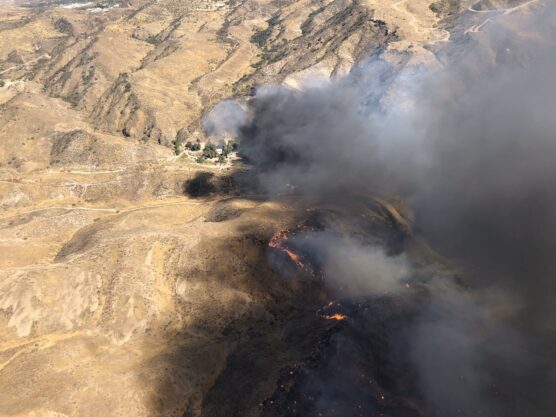By Alan Riquelmy
LOS ANGELES (CN) — California’s insurance commissioner on Wednesday said his office is pushing forward with regulatory reform, pointing to new requirements he said will lead to more policies in wildfire-prone areas.
The changes revealed Wednesday require insurance companies to write more policies in high-risk wildfire areas if they want to use forward-looking catastrophe models when developing rates. Insurers using those models also must consider actions taken by policyholders to mitigate the risk of wildfire.
Insurance companies must specify the areas where they write policies when submitting rate filings, and the insurance department will use its existing enforcement authority to ensure they comply.
“Californians in every corner of our state are frustrated with outdated regulations and desperate for change,” Insurance Commissioner Ricardo Lara said in a statement. “Whether you live in the Sierra or the foothills, along the coast or in a city, California is not a ‘one-size-fits-all’ place, and we need to be inclusive. We are enacting a major reform that will result in insurance companies writing more policies, so if you are stuck on the FAIR Plan because of your unique wildfire risk, there will be help for you.”
The state’s Fair Access to Insurance Requirements Plan, or FAIR Plan, was meant to be an insurer of last resort. In many cases, it’s now become the only insurance people can access as policy costs have skyrocketed.
Under an agreement reached last year and now enacted, insurers must write policies for at least 85% of properties in distressed areas. Larger companies must meet that threshold within two years of adopting a rate. Those companies that already meet the threshold must keep their existing policies for three years.
Smaller and new companies, as well as those that write policies mostly outside of fire risk areas and can’t achieve the 85% level, must expand their policy writing by at least 5%.
“Competition is the first step to guide the market to a place where pricing reflects ongoing wildfire mitigation efforts undertaken by Californians, including by our farmers and ranchers who work to remove fuels and safeguard properties,” said Shannon Douglass, president of the California Farm Bureau, in a statement.
Additionally, Lara’s department released a map of California showing spots with wildfire risk and concentrations of FAIR Plan policies. This gives insurance companies the information they need to write more policies and enable their use of catastrophe modeling when determining rates.
The department used insurance information to find ZIP codes that have over 15% of FAIR Plan policies. It also found the counties where over 20% of its policies are deemed high risk.
Areas with high concentrations of FAIR Plan policies, as well as wildfire risk, include large portions of the North State, as well as the Sierra. Areas with lower risk and fewer FAIR Plan policies include much of the Bay Area, as well as the cities and land around Sacramento, Fresno and Bakersfield, along with Los Angeles and San Diego.
The map created by the department was aided by Cal Fire, which recently identified fire hazard zones.
“This type of coordination and alignment between state agencies is a critical part of our success in preparing communities for wildfire,” said State Fire Marshal Daniel Berlant in a statement. “Commissioner Lara’s work aligns with Cal Fire’s wildfire mitigation efforts and builds on major investments the state is making to protect residents.”
Lara’s Wednesday announcement is the latest move in what he’s said will be a yearlong effort to change the state’s insurance rules. California Gov. Gavin Newsom has pushed for more transparency and faster schedules for the approval of rate changes — moves that are part of a budget trailer bill.
“As the climate crisis has rapidly intensified, the insurance system hasn’t been seriously reformed in 30 years — this is part of our strategy to strengthen our marketplace and get folks the coverage they need,” Newsom said in a statement.
Like this:
Like Loading...
Related





 Tweet This
Tweet This Facebook
Facebook Digg This
Digg This Bookmark
Bookmark Stumble
Stumble RSS
RSS


























REAL NAMES ONLY: All posters must use their real individual or business name. This applies equally to Twitter account holders who use a nickname.
0 Comments
You can be the first one to leave a comment.